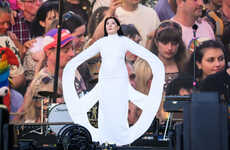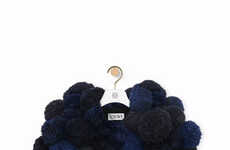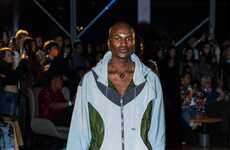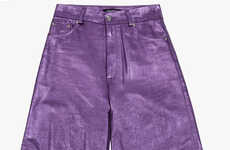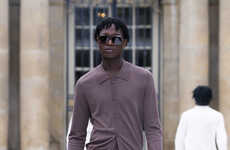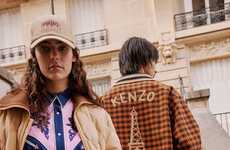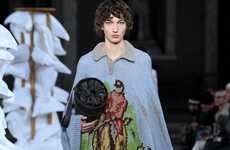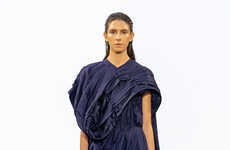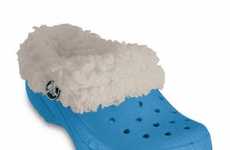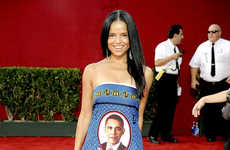
Ponchos in Peru at the APEC Summit
Hayley Grieve — November 25, 2008 — Social Good
References: news.yahoo
It sounds like a fashion shoot on crack: George Bush posing with Dmitri Medvedev? In Ponchos? In Peru? That’s exactly what happened this week as APEC leaders met in Lima, Peru to discuss economic trade and investment issues for the Pacific Rim regions.
It’s become tradition to take an annual photo of all leaders wearing the host country’s customary garb. Ironically, it all started in 1993 in one of the only countries in the world without recognizable “traditional” attire: the United States. Nevertheless, since Bomber jackets were all the rage in the Kurt-Cobain Seattle era, a small piece of history began.
Since then, they have worn Batik shirts in Malaysia, Chamantos in Chile, and beautiful Hanboks in Korea. And of course no photo was ever complete without (almost) all smiling, happy faces.
I expect this to be come a larger event that gains more world-wide attention in the next few years as host countries vie to out-do one another with winning the finishing photo. Already, mainstream media is trying to tie the Peruvian’s choice of baby alpaca shearings to what is happening on the runways in New York.
It’s become tradition to take an annual photo of all leaders wearing the host country’s customary garb. Ironically, it all started in 1993 in one of the only countries in the world without recognizable “traditional” attire: the United States. Nevertheless, since Bomber jackets were all the rage in the Kurt-Cobain Seattle era, a small piece of history began.
Since then, they have worn Batik shirts in Malaysia, Chamantos in Chile, and beautiful Hanboks in Korea. And of course no photo was ever complete without (almost) all smiling, happy faces.
I expect this to be come a larger event that gains more world-wide attention in the next few years as host countries vie to out-do one another with winning the finishing photo. Already, mainstream media is trying to tie the Peruvian’s choice of baby alpaca shearings to what is happening on the runways in New York.
Trend Themes
1. Fashion Diplomacy - The tradition of leaders wearing host country's customary garb during international events opens up opportunities for collaborations between fashion and politics.
2. Competitive Host Country Attire - As host countries vie to out-do each other with their choice of traditional attire, there is a potential for disruptive innovation in the fashion industry to create unique garments that reflect the host country's culture.
3. Mainstream Media's Influence on Fashion - The media's attempt to connect host countries' clothing choices with runway fashion trends indicates an opportunity for the fashion industry to capitalize on and shape media interest in global fashion events.
Industry Implications
1. Fashion - The fashion industry can leverage the tradition of leaders wearing traditional attire to explore new design collaborations and increase international exposure.
2. Event Planning - The increasing attention on the finishing photo of world leaders wearing host country's traditional attire creates an opportunity for event planning businesses to specialize in organizing and coordinating these symbolic moments.
3. Media and Journalism - Media outlets can create more buzz around fashion events by highlighting the connections between host countries' clothing choices and current runway trends, leading to increased engagement and viewership.
1.9
Score
Popularity
Activity
Freshness

